During the Prague monolith meetup in March 2017 ACE Lab announced a new Spider Board adapter for convenient monolith reading. In this article we are going to describe the main features of this adapter and show example of MicroSD reading.
PC-3000 Flash Spider Board Adapter is a universal solution for safe monolith recovery without tedious soldering! Using it you don’t need specific adapters to each monolith you deal with.
It is designed for connection to internal contacts of NAND-based Flash drives manufactured as single-package chips (monoliths). The adapter consists of 25 universal contacts that support software configuration of their association with NAND interface signals in a corresponding task. Please note, that the adapter is supported by PC-3000 Flash Reader 4.0 only.
Watch the video below to have a complete overview of Spider Board adapter and example of MicroSD reading process:
Spider board is a very smart hardware configuration based on full-fledged configurable Xilinx microchip. It’s a complete system with wide number of functions, that are constantly updated and improved. The Spider Board adapter has two main features:
- Ability to read the data from the broad range of monolith devices;
- Opportunity to work in Card Adapter mode with mSD, SD, eMMC devices (it’s necessary to chose Card Adapter in Device Options during the new task creation).
Note 1:
The adapter’s needle-like pins are essentially sophisticated noise-proof contacts designed considering the technical tasks and specifics of the device. They are nickel-plated to prevent oxidization and partially covered with special tip coating for short circuit prevention.
Needles are rather flexible and can be bended after installation on Pin Map pads on monolith. Use a microscope to check all the needles are arranged correctly and not moved anywhere from Pin Map pads after being fixed:
To avoid any damages, please, remember the following scheme:
Without fixing the screw, needle can be stretched. When you are going to fix it with thumb screw, position of needle edge is shifted:
Don’t worry if you bend, screw or somehow damaged the needles of your Spider Board Adapter. You may always order an additional set od spider board neeedle and replace the bad ones.
Note 2:
New adapter has two ways of providing power supply – from needles and from extended clams output. Basically, it’s possible to work with monolith absolutely without soldering – everything you need is just arrange 2-3 needle for GND and 2-3 on VCC on the same pin (VCC, GND).
To provide good power supply current use several needles for PWR and GND, instead of using them for other important contacts. Whenever possible, power and ground contacts should be connected to a monolith using stranded conductors with the diameter of at least 0,2 mm! Thicker cross-section of wires will always provide better PWR supply to monolith.
ATTENTION: For better reading result, we recommend you to pay attention for wires (they should be short and wide) and for power supply soldering (use the flux and soldering tin).
Note 3:
The ability to read chip ID or image of NAND depends on the type of monolith internal structure. There are 2 different types:
- With separate bus line from Technological Pin Map to CPU and NAND core:
Type 1
- With common bus line that goes from Technological Pin Map to NAND core through controller chip:
Type 2
Usually there is no problem to read Type 1 chips. All you need is to arrange the pins and start the reading process.
As for the Type 2 chips, data recovery tasks become much more complicated. As you can see from Type 2 scheme, bus from technological pins goes through CPU, and controller may influence on possibility to transfer the data. The main reason why all Flash drives become corrupted is a Firmware issue. But hardware parts such as CPU, buffers and NAND are remained in operating condition. When you power ON, CPU starts working and may block access to NAND core through Techno Pins. Here are the typical signs of such behaviour:
- ID is reading incorrectly (missed or mixed bytes: instead 0x45DE9493 it might read 0xDE949345, or 0x45009493);
- ID is reading normally but dump is not reading (abort with error);
- ID is not reading (0xFFFFFF, 0x000000, 0x6C6C6C6C6C);
If you have one of these issues, you should be aware about possible problem with CPU influence.
Here are several methods to bypass the CPU influence:
- You can try to decrease power supply values to 2.4V – 2.8V using the main NAND ID Window:
With lower voltage, controller of monolith device may become turned-off, and it will be possible to read NAND chip without any noises or blocking commands from CPU side. But be careful – too small voltages may be a reason of switching-off NAND buffers. In this case dump reading will be impossible until you restart power supply. That’s why you need to select several values from 2.4V till 2.8V and find the best one for chip ID and dump reading.
- Another way – physical controller destruction. This method is for experienced engineers only. Please note, it’s very dangerous, because you can damage internal structure of monolith and make your monolith unrecoverable! You may use the following operations at your own risk.
For physical controller destruction you should know where exactly controller is located. Without X-RAY picture it’s impossible to find CPU. As soon as you make an X-RAY picture of monolith internal structure, you will be able to find controller crystal and drill it (or just scratch) with very thin auger. After that, bus line will be free out of controller influence, and it will become possible to read the whole dump.
Example №1 of controller placement inside UFD monolith device (pictured by Recuperodatos.com)
Example №2 of controller placement inside UFD monolith device (pictured by Myung Information Technologies)
To know more, please, read the Spider Board manual in your Update box. If you have any questions do not hesitate to ask ACE Lab technical support service for assistance.



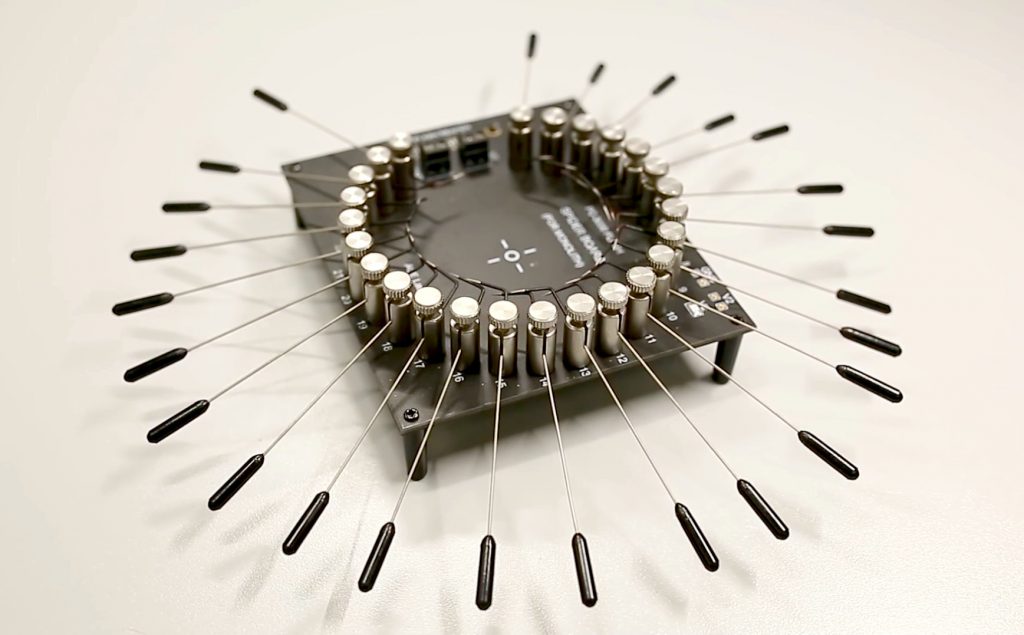

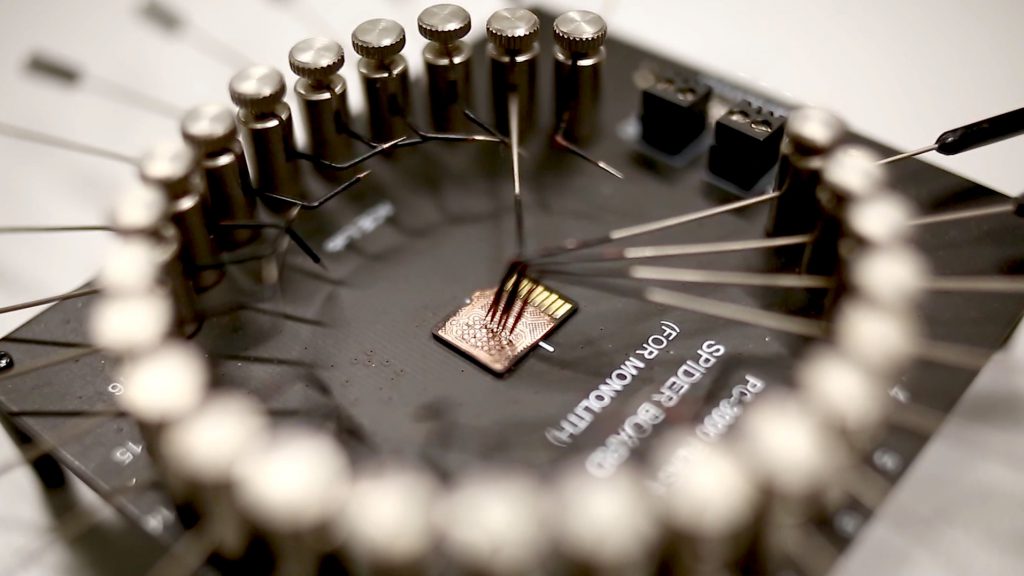


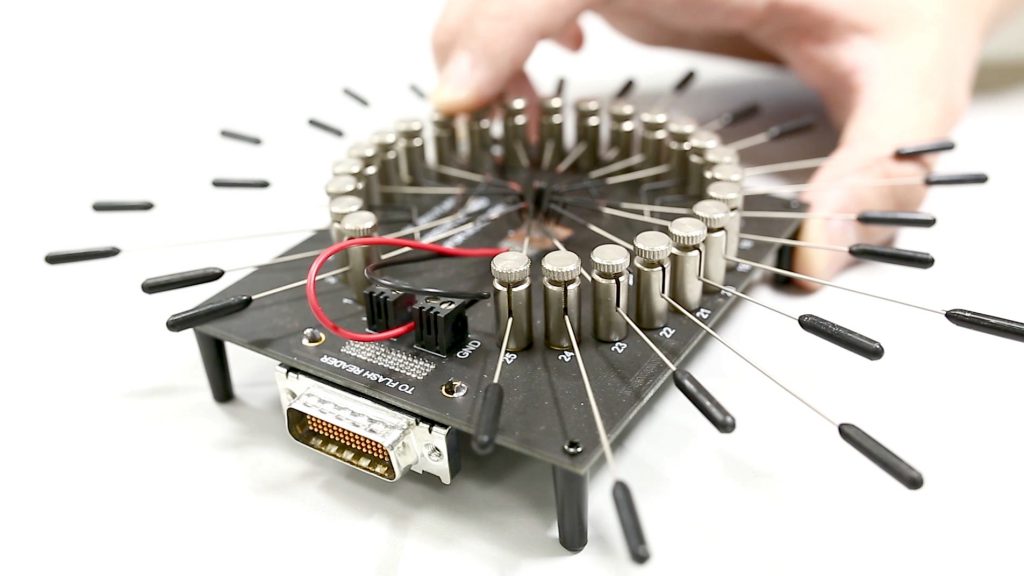
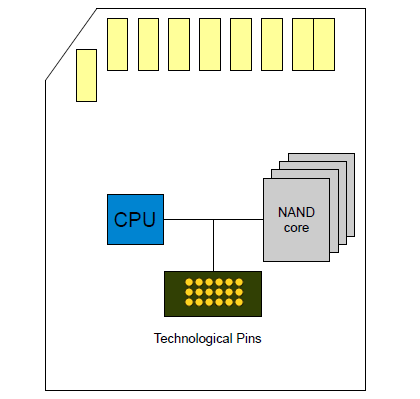
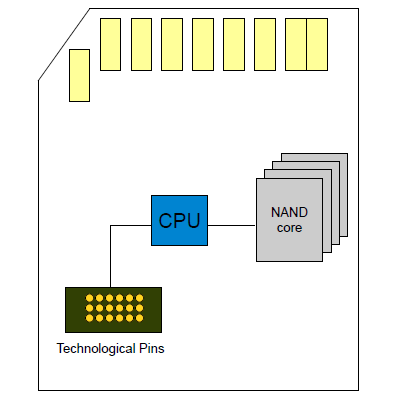


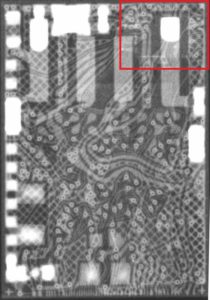
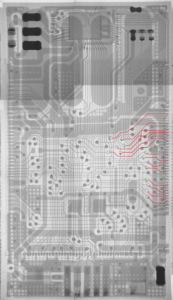
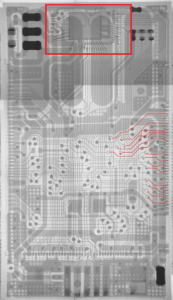
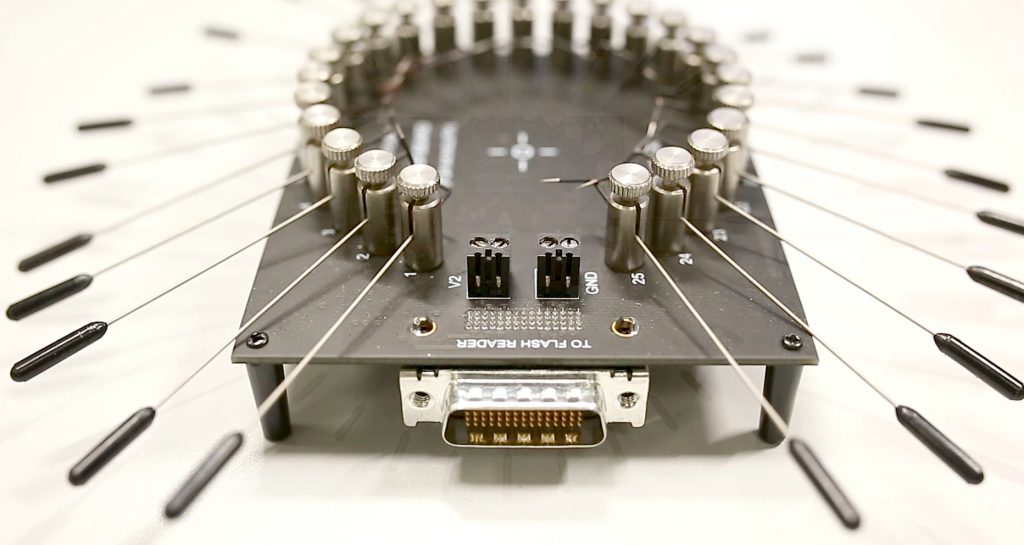

 (4 votes, average: 4.00 out of 5)
(4 votes, average: 4.00 out of 5)
Excellent contribution! Thanks ACELAB TEAM 🙂
Please let me know where india is available
I need this
Hello!
Please contact with our reseller in India:
DATA TRACK SYSTEM
Vikas Seth
E-mail: support@datatracksystem.net
Web: http://www.datatracksystem.net
Hello,
is it possible to find the spider board and the flash reader in Italy? What’s the price of them?
Best Regards
Marco
Hello Marco. Sure, you can contact our sales dpt:
https://www.acelab.eu.com/order.php
Sales representative will connect you with ACELab partner in Italy
Can you use the spiderboard if the microSD is broken just under its external contacts? It seems that GND and V2 have wires not fingers
In theory – yes, you can, but better to make a high-resolution X-RAY picture of the mSD card to find all traces and possible issues that may appear with mSD power lines. Short Circuit due the contact corruption may kill your mSD card. Need to be sure that everything is fine inside the card.
When an eMMC is soldered onto a PCB that uses SMD components, can you reliably connect a spider board’s needles to individual soldered joints that are connected to the eMMC’s I/O lines for data recovery purposes? For example, say that you can connect to the eMMC’s CLK pin through one end of a soldered SMD resistor, can you place the needle onto the solder joint and get a reliable connection?
thank you
In theory, if there are some layout outputs of eMMC pins on PCB, it’s possible. But all depends on individual case.
como adquirir uno desde Argentina .. gracias